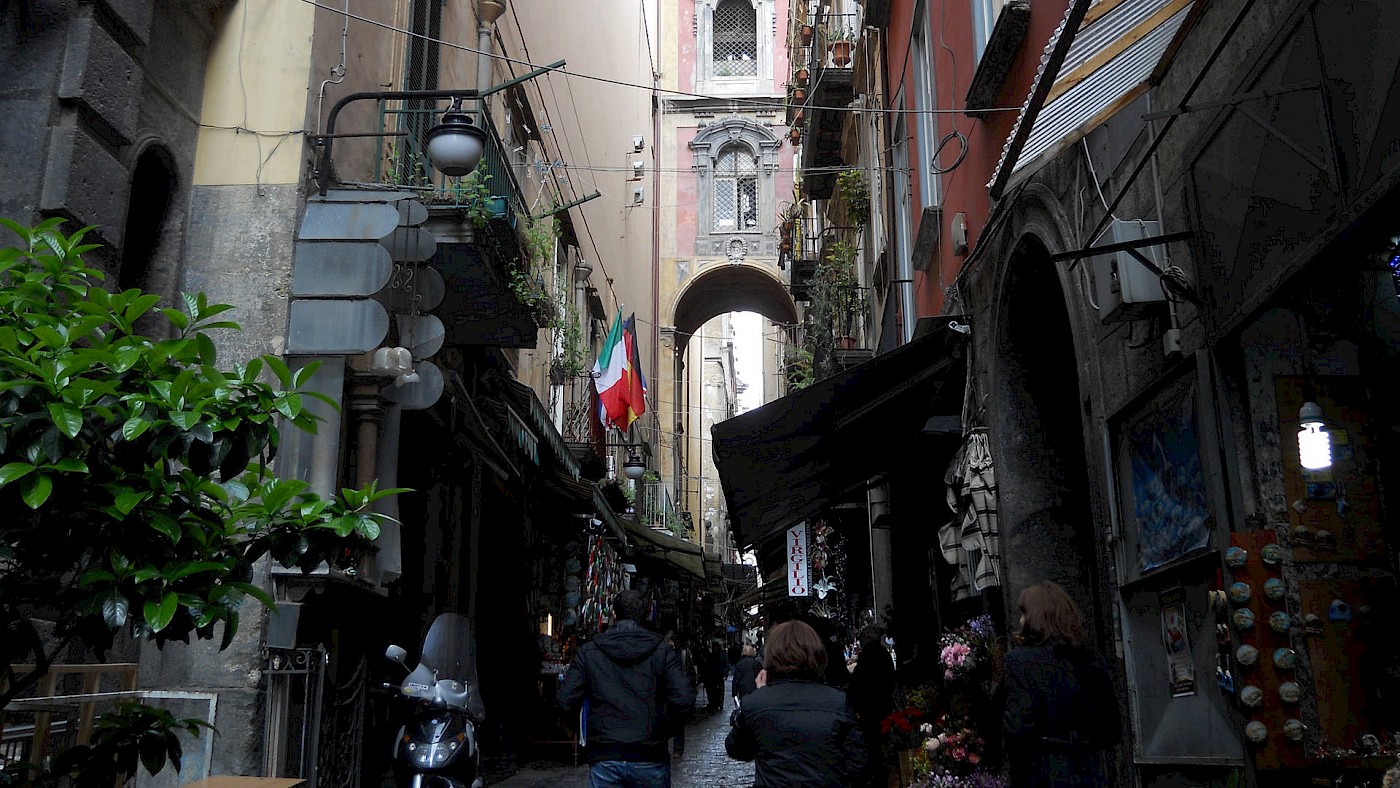Naples, the capital of the Italian region of Campania, is famous for pizza, for music, and for the Vesuvius, and infamous for the many, many problems that every big city faces. Naples is a city with a long, uninterrupted history, dating back to the city’s original founding by the ancient Greeks. In this brief article, I want to highlight some of the beautiful monuments and cultural sights that you can see here.
For this article, I will focus on the city’s centre, which is also its most ancient part: the Decumani. This is actually the original centre of the ancient Graeco-Roman city, where both the agora/market and, more above, the acropolis (the religious centre) were located. The name Decumani derives from the ancient street grid, which is still visible today. In this grid, the decumani were the streets running east-west, perpendicular to streets running north-south, which were called the cardi.
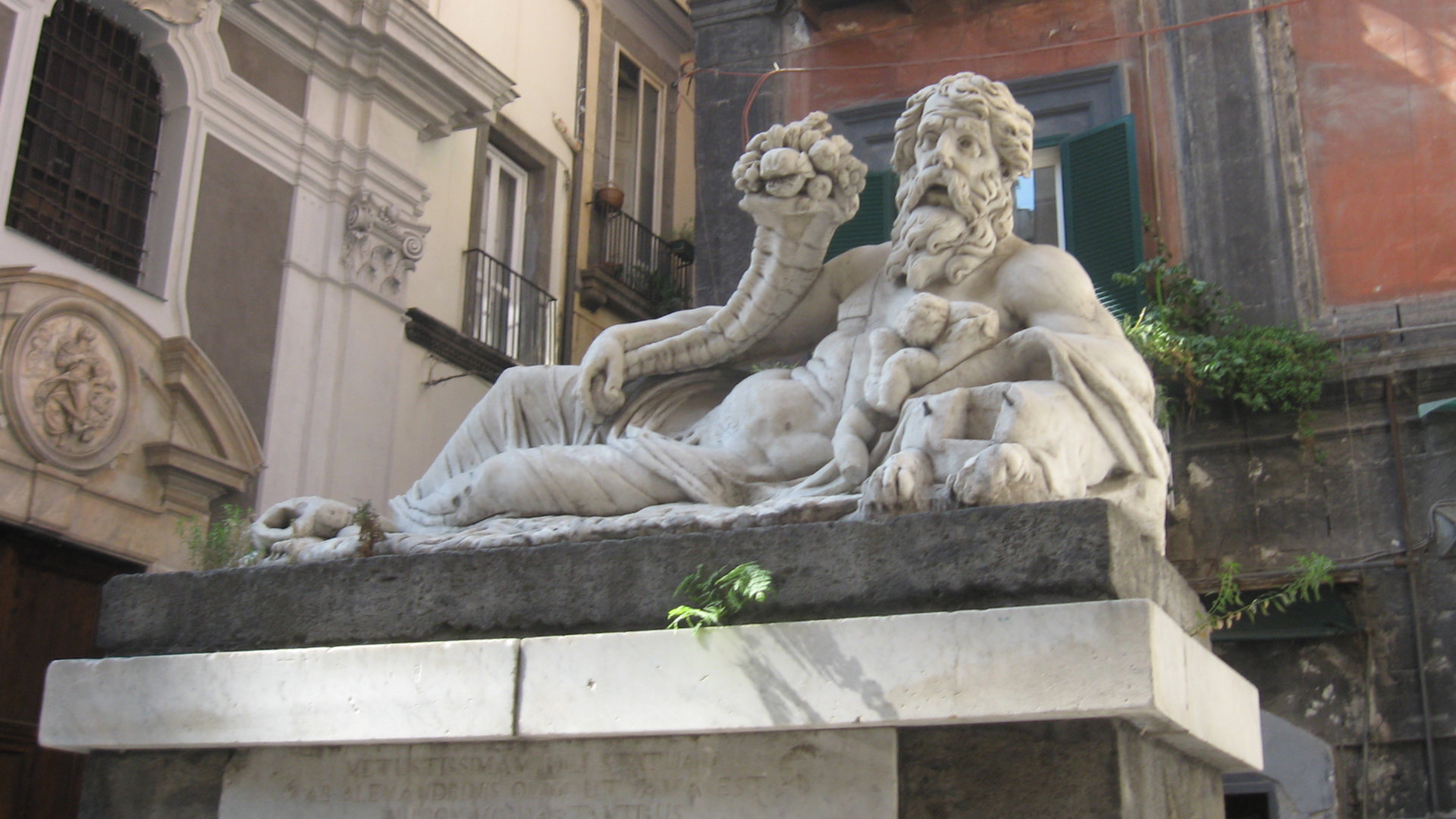
Starting your walk in the Decumani, be sure you don’t miss a stop at the statue of the Nile god (Google Maps). It’s a marble statue representing the god of the River Nile, made in the second to third centuries AD by immigrants from the Egyptian city of Alexandria, as a sign of gratitude for the friendly way in which they were treated by the local people.
Above the Decumani, the arcades of the ancient Roman theatre are still visible. These have now become parts of dwellings. Even the street still follows the arched form of the theatre. The streets are really an intricate maze of small alleys, so you could easily get lost: be very careful or go with some acquaintance that knows the way.
San Lorenzo Maggiore
Located at Piazza San Gaetano (Google Maps), construction of this basilica started in the thirteenth century. It was completed only in the eighteenth century, with some reconstruction work to repair damage caused by earthquakes. Building of the cloister annexed to the basilica was begun in the fourteenth century. It is noteworthy for two rooms, the Sala Capitolare and the Sala Sisto V, which are decorated with frescoes dated to the seventeenth century.

The most amazing, though, is what you can see underground, entering from the cloister: the ancient Roman covered market. You can walk inside this maze of ancient shops with very well preserved walls and structures, with back rooms, banks, oven, windows for air and light still intact. You actually have the impression of being taken back to 2,000 or more years ago, and feel as an ancient Roman walking to get groceries. Beneath the Roman market are the remains of the agora of the Greek period.
The cloister also offers access to a museum, which displays finds from the ancient agora/market and also more modern objects. It is noteworthy for its collection of ecclesiastical objects. For more information, visit the website.
Basilica di S. Paolo Maggiore
Almost in front of San Lorenzo Maggiore is the Basilica of S. Paolo Maggiore (Google Maps). This was originally a temple for the Dioscuri – Castor and Pollux – built in the fifth century BC.
It was transformed into a basilica dedicated to Saint Paul in the ninth and 10th centuries AD. It was reconstructed in the fifteenth century, but some original elements are still visible, such as the Corinthian columns in the facade.
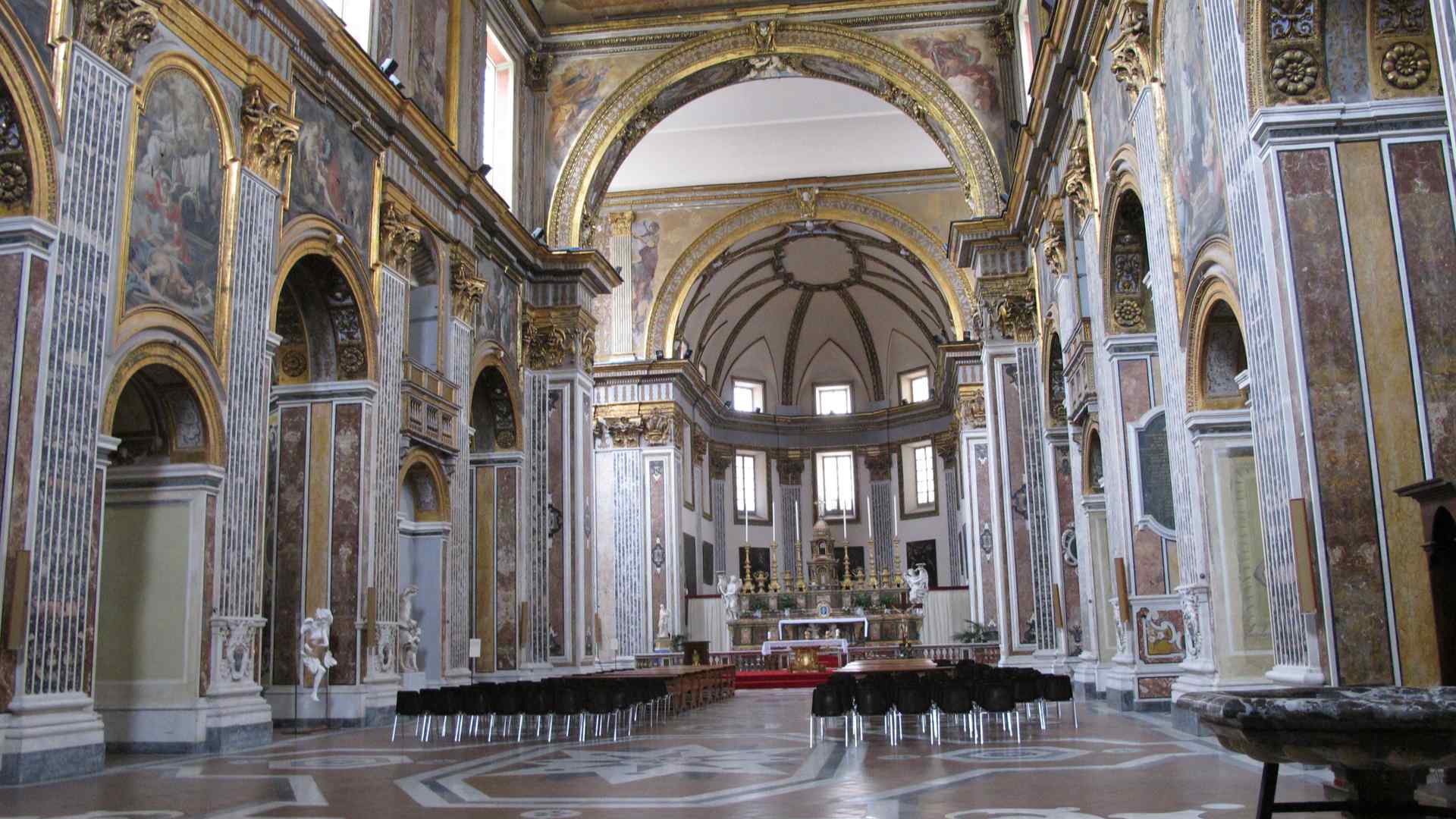
It’s definitely worth a visit, for its impressive architecture – already the stairs leading to the entrance door are quite imposing – and its lavish decorations, such as the wonderful canvases and reliefs, visible mostly in the chapels situated along the lateral naves. Visit the website for further information.
Cappella Sansevero
A short walk from the Basilica of S. Paolo Maggiore will take you to another one of my favourite attractions, namely the Chapel of Raimondo di Sangro, Prince of San Severo (Google Maps). Originally this was an ancient temple of Isis. In the sixteenth century, it became a small gentilitial church dedicated to the Virgin Mary.
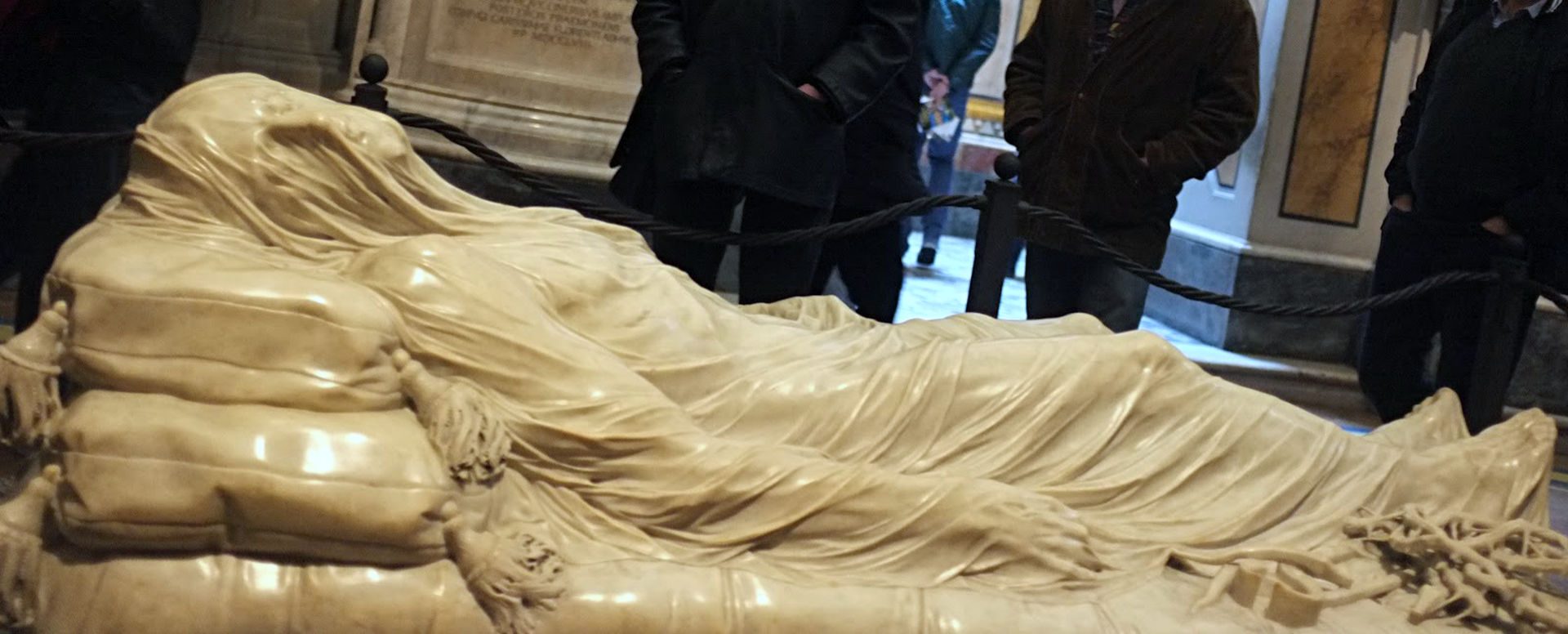
In the eighteenth century, it was refurbished by Raimondo di Sangro, who was famous for carrying out scientific experiments and was rumored to be a sort of alchemist, or scientist-magician.
The must-see object in this chapel is the so-called Veiled Christ: a statue created by Giuseppe Sanmartino that depicts the dead Christ covered by such a finely-worked veil that rumors where spread about Raimondo actually transforming a person – or at least the veil – into stone through the use of some kind of potion.
In the underground part of the same chapel there are two so-called Macchine anatomiche: representations of human bodies whose blood systems and vessels are so finely executed that it was rumored that they were the bodies of two servants used by the Prince in his experiments. For more information, visit the website.
Santa Chiara
Not far is the basilica of Santa Chiara, with attached monastery and marvelous cloisters (Google Maps). Originally there were Roman thermae (baths) here, dated to the first century AD, which were used at least until the fourth century AD.
Later, in the fourteenth century, the king decided to build a basilica in Gothic style, with attached monastery. The basilica in itself is worth visiting for the architecture that creates an impressive, spiritual atmosphere, including great lighting; the canvas in the chapels located in the lateral naves, and the frescoes of the fourteenth century are still visible. Members of the royal and the noble families are buried here.
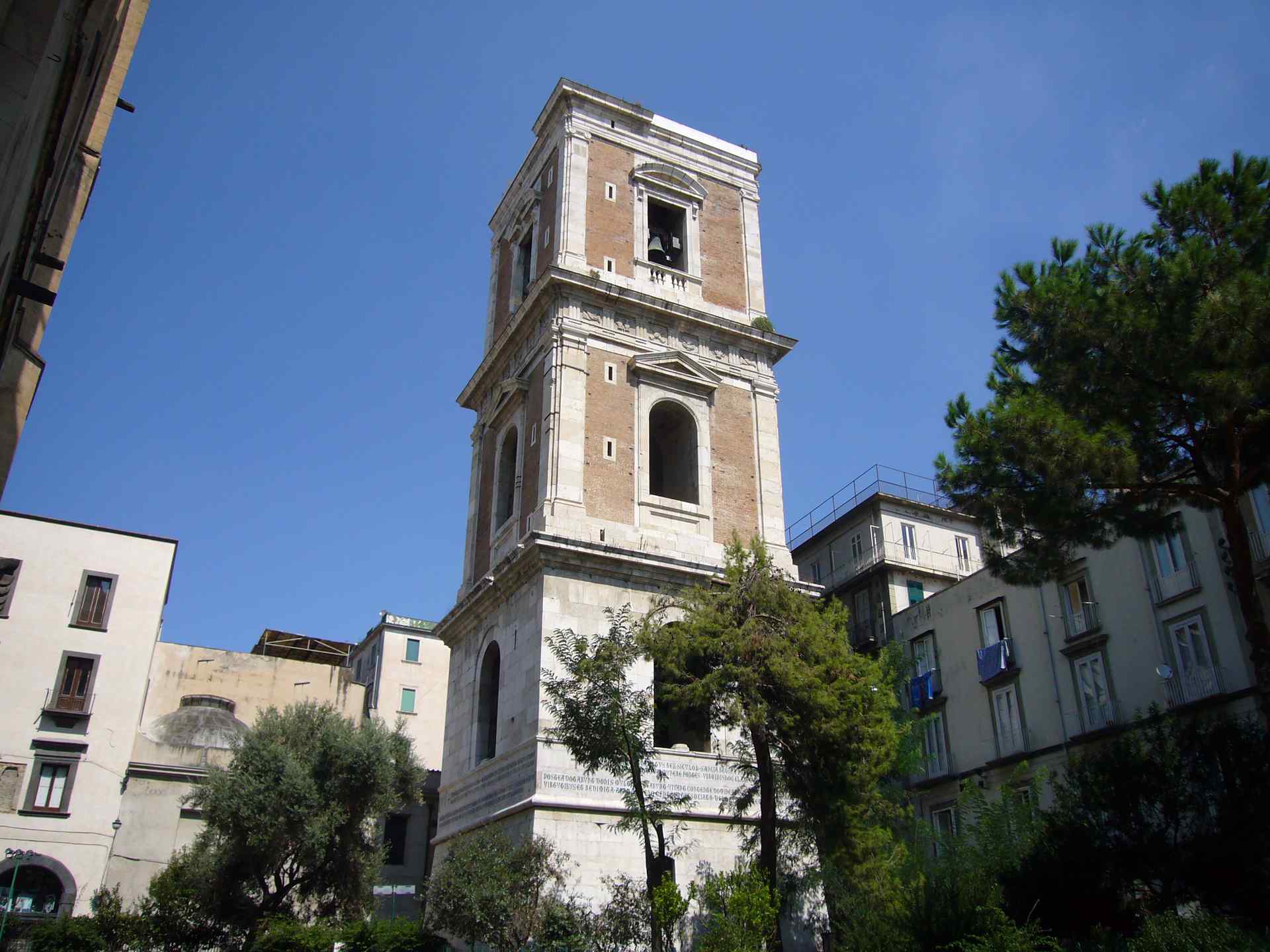
Also, the cloister is fantastic, with the colourful decorations of finely worked maiolica realized in the eighteenth century, a must-see artistic masterpiece. From the cloister there is access to a small museum with richly decorated ecclesiastical objects, and an exposition with nativity sets – both are worth a visit. You can access the excavated Roman baths from the museum.
If you’re in Naples, be sure to visit Santa Chiara, because the tickets are very cheap, too! For more information, visit their website.
